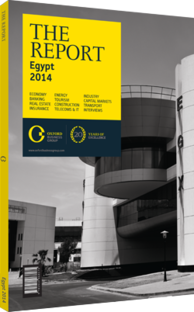OBG talks to Mohab Mameesh, Chairman, Suez Canal Authority (SCA)

Interview: Mohab Mameesh
What is the expected impact of the new canal project on waiting hours and congestion?
MOHAB MAMEESH: The transit of vessels through the Suez Canal currently alternates between either north-tosouth or south-to-north. As a result, ships have to wait for eight to 10 hours, with clear implications in terms of cost and efficiency for companies operating in the canal. The new lane will run parallel to the current one and allow traffic to flow in two directions at the same time, reducing the waiting period to three hours. We estimate that it will also allow for the transit of 97 ships per day, almost double the current capacity.
In what way is the Suez Canal Area Development Project (SCADP) going to help expand economic activity in the Canal Zone?
MAMEESH: Firstly, it is important to stress that the New Suez Canal project and the SCADP are two distinct projects that will jointly promote economic activity in the Suez Canal area. As for the latter, the overarching goal is to transform the canal area into a global economic and logistics hub capable of benefitting from increased trade traffic through the Suez Canal. In three to five years, we are aiming to develop the manufacturing capacity of the area in a wide range of fields, including automobiles assembly, electronics, petrochemicals, light metals, logistics and glass manufacturing. In addition, the North-west Gulf of Suez and Port Said will be developed into a services hub for the shipping industry. In particular, we are looking to strengthen bonds with Chinese investors in order to develop the manufacturing of containers in the area.
What measures could be rolled out to attract further investments in the Suez Canal area?
MAMEESH: The New Suez Canal will be financed with national resources. The companies chosen to carry out the projects are local firms, complying with the highest international standards. However, the SCA is keen to encourage foreign investors to feed into the wider aims of the SCADP. The SCADP will be rolled out in three phases. In the current phase we are developing a master plan and an investment promotion strategy for local and international investors, as well as a legislative body for regulating investment in the area. The breadth of the SCADP is wide, and so are the opportunities for investors. For instance, we are going to upgrade six ports in the geographical zone of the project – Port Said East, Port Said West, Port of El Arish, Sokhna Port, Adabiya Port and Port of Al-Tour. Each one presents opportunities both in terms of construction and utilities. Furthermore, the SCADP is projected to absorb a lot of energy consumption. We are keen on building partnerships with private firms in order to develop the area, especially in the fields of service infrastructure and power generation. Specifically, we are looking at traditional energy sources but also, and perhaps most importantly, alternative sources of energy.
Why were tolls increased in 2012 and 2013, and what has been the effect on competitiveness?
MAMEESH: The toll rises in 2012 and 2013 were necessary to adapt to the changing economic environment. The Suez Canal is the greatest source of hard currency for the Egyptian government and the associated revenues are of fundamental importance in financing a broad range of turnkey investments serving the Egyptian economy. The impact on the competitiveness of the Suez Canal was negligible. In the first half of 2014 ship traffic grew by 2.6% year-on-year, leading to a 4.1% increase in net cargo tonnage. In 2014 the Suez Canal is expected to hit a record peak in revenues of $5.5bn.
In light of the new expansion plans, the range and quality of marine services provided by the SCA to its customers will undeniably improve. This may naturally be matched by an increase of tolls. Our responsible economic unit is composed of competent economists who will thoroughly analyse and evaluate the case for the price increase, as has been done in the past. In any case, a decision will be made and announced by May 1, 2015.
You have reached the limit of premium articles you can view for free.
Choose from the options below to purchase print or digital editions of our Reports. You can also purchase a website subscription giving you unlimited access to all of our Reports online for 12 months.
If you have already purchased this Report or have a website subscription, please login to continue.

